Guy Vandersande, botanical director of the park Pairi Daiza, has this privilege! We had the opportunity to discover his 5 favourite spots in the park together with him.
After a first pleasant phone call, we sat there early in the morning at the opening of the park in the waiting room. We have an appointment with Guy Vandersande. French-speaking enthusiasts will undoubtedly know him as a co-presenter of the garden programme “Jardins & Loisirs” on the RTBF and of his latest book “Guide de la couleur au jardin“. We will visit the park together with this reference in the world of botanists. It seemed like we were waiting for a job interview, but as soon as we had shakend hands we were completely immersed in what was promised to be a passionate morning.
An unique park
In the preliminary telephone conversation we asked Mr. Vandersande to select his 5 favourite places. This turned out to be almost mission impossible. Without exaggerating, the park has many fantastic spots, one even more beautiful than the other. The question would be better which places could still be improved. Pairi Daiza is therefore a unique park; neither zoo nor botanical garden but a mix of both worlds in constant development. It no longer resembles the old Paradisio of the past. Partly for that reason the park changed its name. Pairi Daiza, old Persian for ‘closed garden’, covers the load better. A zoo with so much attention to the botanical aspect is rather rare. Moreover, the whole family will experience a great day for everyone!
 Evolved approach
Evolved approach
As we walk around the pond and along the aquarium, Mr. Vandersande tells us that not only the name has changed since our last visit (“The largest Indonesian garden in Europe: the secret of Paradisio” dd 2010). They now actually only use plants that can stay outside all year round. We do remember how much earlier an important part of the plants was excavated for overwintering in the greenhouse “Oasis”. This new approach may limit the choice of plants, but they now suffer far less losses and the plants adapt much better, resulting in better growth. He tells us that they prefer to use young plants because they adapt faster. We stop for a Cycas revoluta at the entrance of the Chinese garden “la cité des immortels“. Like many other more sensitive plants, this is also protected in the on the spot during winter. Frankly, we fully support this new approach. We too are increasingly protecting more and more on site and bringing in fewer and fewer plants for winter.
Choise of plants
As we enter the Chinese garden deeper and deeper, Mr. Vandersande tells us that he gets a lot of inspiration for the choice of plant from all his botanical travels. He regularly participates in organised garden trips and the UK and Japan are visited almost every year. His passion for plants translates into an immeasurable knowledge and experience. Did you know that he himself is responsible for the choice of plant for the whole park? There is only one rule in this respect, and that is to simulate the right atmosphere. The plants do not necessarily have to come from that region. After all, this is not always feasible in terms of hardiness. There is a practical side to it: the plants must not only be able to withstand the many visitors but also the free moving animals! Some of them, such as geese and peacocks, can mess up considerably some borders as he says. There are some additional requirements in the animal enclosures. The plant must not be toxic and the plant must not create a risk of escape. Also, the plants should not be too vulnerable to look beautiful at all times. The maintenance should also not be too demanding as the park is no less than 54 hectares large within the fence, 12 hectares around it and all this is maintained by only 12 gardeners! What an achievement!
The favorite spots
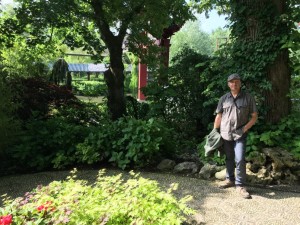 Chinese garden – spot 1
Chinese garden – spot 1
We walk on small winding roads and arrive at the first favorite spot. A bit surprised by the chosen place, at the foot of a large tree with a tree house at the top and relatively remote, we ask what makes this place so special. Mr Vandersande says that it is the tranquility that reigns in this place. Indeed, when you stop for a moment at this place you feel the “Zen” coming over you. Just a little further from the larger sights and you would almost walk past it. The varied planting along the white wall, the bamboo hedges and the small Japanese maples in two colors underline the character of this place.
Photo right: Acer palmatum
Photo gauche: Phyllostachys vivax ‘Aureocaulis’
New Zealand garden – spot 2
Treeferns: Dicksonia antarctica
We follow the path and pass a huge Chinese temple. Kitsch it is certainly but how impressive is this! Even though this is the most visited zoo in the country, at no time do you have the impression that it is crowded. Perhaps this is because it is not really possible to follow a fixed route. The park consists of many small winding roads that show new facets of the park from every direction. After several years, we are still surprised every visit in different places. Every path is worth the effort. We walk past the panda’s that have become the icons of the park, and enter the New Zealand garden. This section has been widely discussed on the exotic forums. Nobody believed that this was going to be a success. All those tree ferns in full sunshine? And what about winter? Some even spoke of “cold shivers over the back” because a protected plant species had been removed from nature before. Mr. Vandersande explained that these tree ferns are indeed a protected species in New Zealand and therefore should not be exported. However, they were located in a place where a road had to be built and would all be destroyed! The park has therefore attempted to save them all and successfully! The natural habitat is eminently imitated. Our visit fell early in the year, but we saw all the new leaves ready for the coming season. Remember that every (!) tree fern gets its own protective cover and heat cable in winter and that they are also all kept moist. A huge amount of work!
Photo middle: Chamaerops humilis
Gleditsia aurea
Indonesian garden (1) – spot 3
We leave the New Zealand garden and walk through the African part “La terre des origines“. Mr. Vandersande tells us that the Asian part of the area is relatively easy to plant in comparison with this piece. Not only is the black continent less rich in plant species, but most of them are not at all hardy. He therefore opted mainly for plants with a more aggressive appearance. There are also plans for some Albizia Julibrissin ‘Summer Chocolate’, but we suggested using the variety ‘Evi’s Pride’ instead. It has the same color of leaves but is more resistant to our winters. After a passage along the rhinoceroses and elephants where the planted trees provide beautiful shades of color, we arrive at the top of the Indonesian garden “Le royaume de Ganesha“. It is no surprise that this place has ended up in the top 5. You really think you are abroad. The Tetrapanaxes along the pass, the real (!) rice fields and the banana plants complete it all. Mr. Vandersande explains to us how they have found a stronger rice variety in southern France, better suited to our climate. Every spring the rice plants are planted out and when they are large enough and sufficiently rooted, the water level is increased to the edge. We think that, when the young Tetrapanaxes are a bit bigger, this path will be breathtaking when you can walk underneath the typical leaf.
Photo middle: Tetrapanax papyrifer ‘Steroidal Giant’ & Musa basjoo
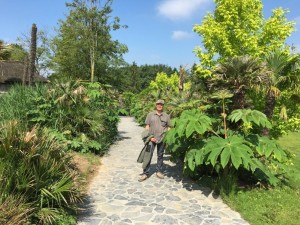 Indonesian garden (2) – spot 4
Indonesian garden (2) – spot 4
Tetrapanax papyrifer ‘Steroidal Giant’ & Chamaerops humilis
Not much further on we already come to the next place. With the Indonesian temple slantingly behind us, palms and Tetrapanax along the path and behind it the typical huts. It looks like you are on holiday. It is nice to see how the Chamaerops humilis replaced the Jubaea’s who were planted along this pass but died. In a few years time, when the palms are more developed, you would hardly believe that you are still in Belgium.
Photo right: Trachycarpus fortunei
Brahea armata
Allium giganteum
Impressionists garden – spot 5
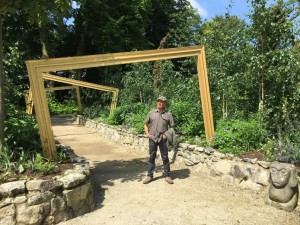 We leave the Indonesian garden behind us and follow the path towards “La terre du froid“. This place is still a lot of construction but is interesting with an impressive restaurant “Izba” and a hangar with seaplane and typical off-road vehicles. Of course, this part will also present the necessary botanical challenge, as the Mongolian steppes are not exactly known for their biodiversity. The morning is almost over when we walk towards the characteristic tower. This landmark was the tower of the old Abbey of Cambron. At the foot of this tower is the last favorite spot, the Impressionist Garden. You would almost walk past it! Mr. Vandersande tells us how Monet and Van Gogh’s paintings formed the basis for this garden. We do indeed recognize the colors and even some plants. We see the typical cypresses Van Gogh also painted. The giant photo frames are a playful nod to painting. This garden was preceded by a lot of study work, but the result is impressive. Moreover, you are usually alone on this spot so you can optimally enjoy this botanical work of art.
We leave the Indonesian garden behind us and follow the path towards “La terre du froid“. This place is still a lot of construction but is interesting with an impressive restaurant “Izba” and a hangar with seaplane and typical off-road vehicles. Of course, this part will also present the necessary botanical challenge, as the Mongolian steppes are not exactly known for their biodiversity. The morning is almost over when we walk towards the characteristic tower. This landmark was the tower of the old Abbey of Cambron. At the foot of this tower is the last favorite spot, the Impressionist Garden. You would almost walk past it! Mr. Vandersande tells us how Monet and Van Gogh’s paintings formed the basis for this garden. We do indeed recognize the colors and even some plants. We see the typical cypresses Van Gogh also painted. The giant photo frames are a playful nod to painting. This garden was preceded by a lot of study work, but the result is impressive. Moreover, you are usually alone on this spot so you can optimally enjoy this botanical work of art.
Photo middle: ‘Lilium Lollypop’
Photo right: Podophyllum versipelle ‘Spotty Dotty’
Photo middle: Sambucus nigra
Phoenix canariensis
On our way to the exit we pass a huge Phoenix canariensis that had only just been planted in 2010. It keeps on going perfectly well. Mr. Vandersande quickly picked up a ripped out plant from the footpath at the last flower bed. That is sure to know the work of a peacock he concludes!
We thank Mr. Eric Domb, owner of the park for this opportunity and Mr. Guy Vandersande for the very pleasant exchange.
Practical information:
The park is situated in southern Belgium between Mons and Ath
Parc Pairi Daiza: https://www.pairidaiza.eu/nl
Domaine de Cambron
B-7940 Brugelette (Belgium)
© La Palmeraie




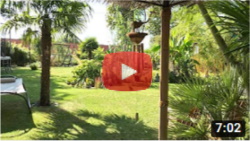






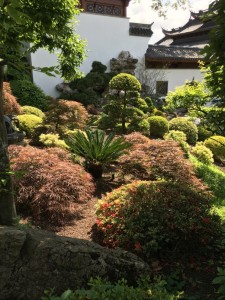

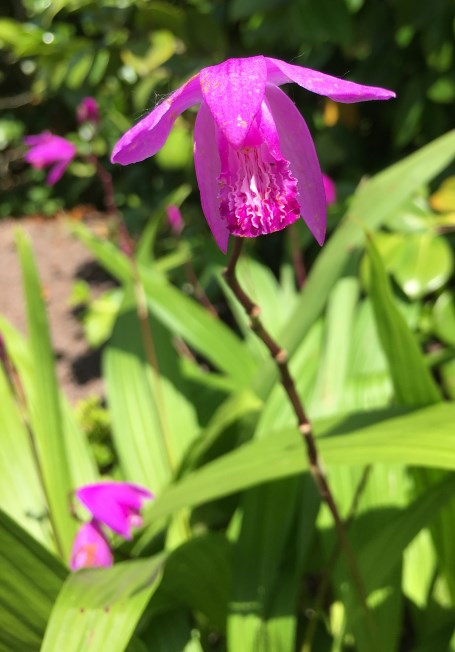

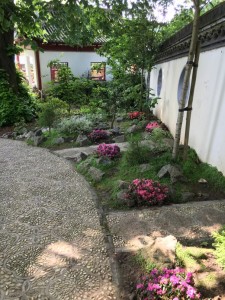
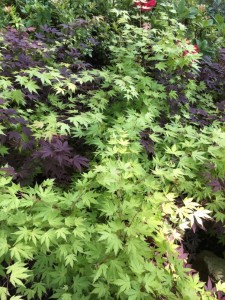


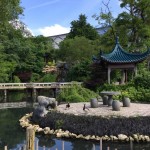
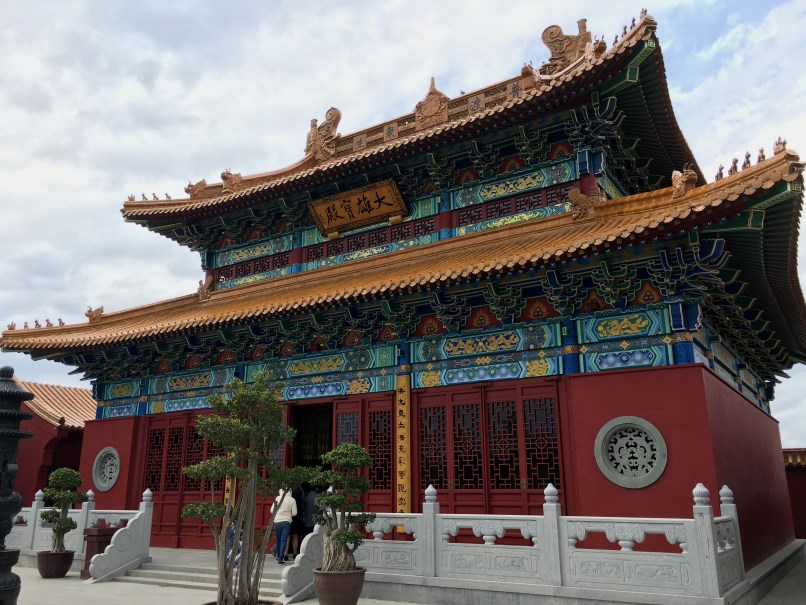

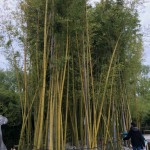

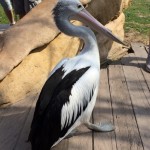

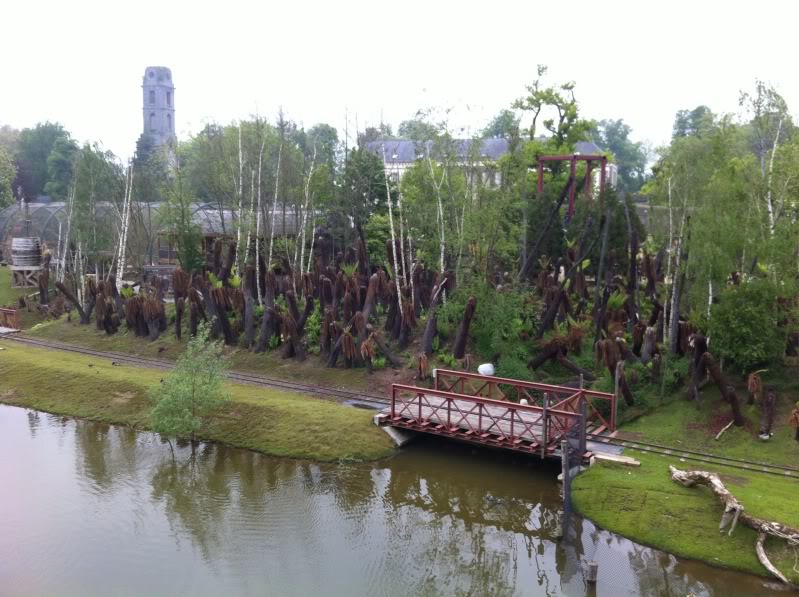

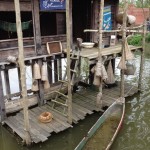
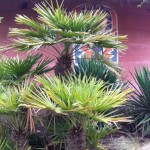
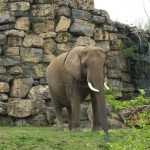
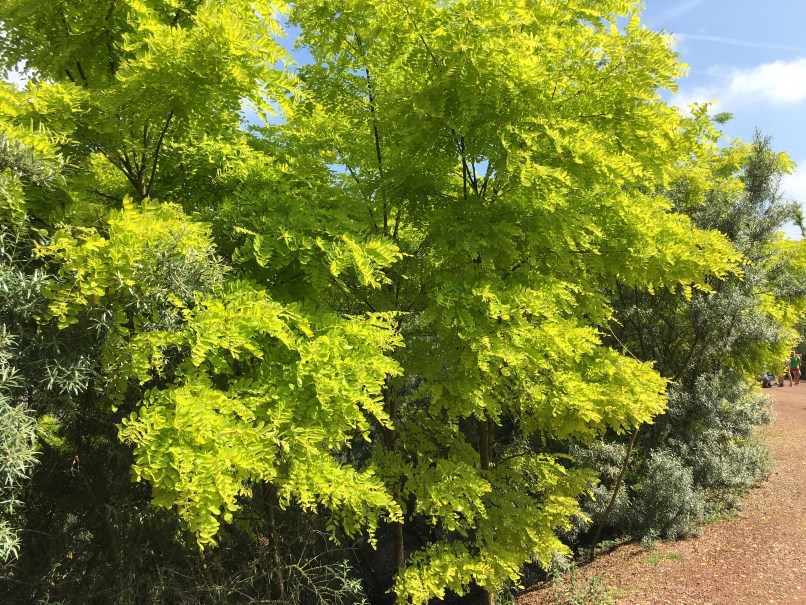
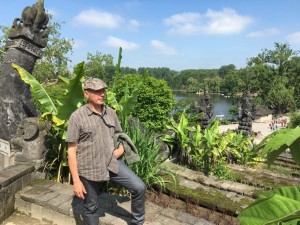
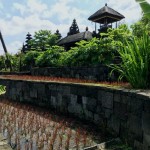

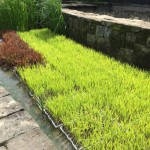


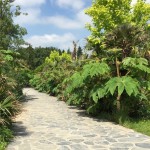
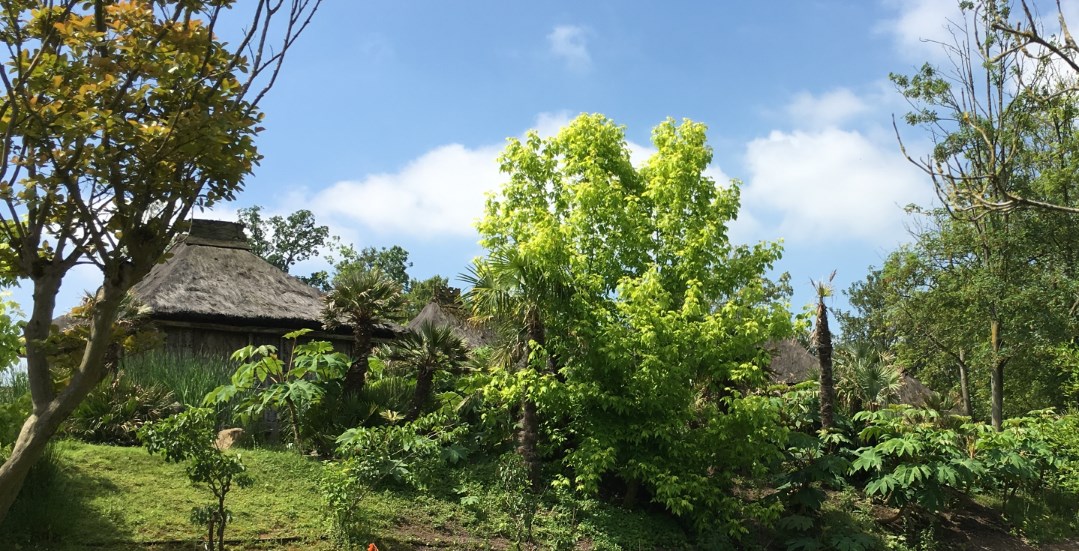



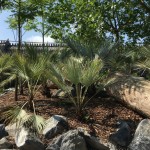
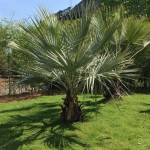

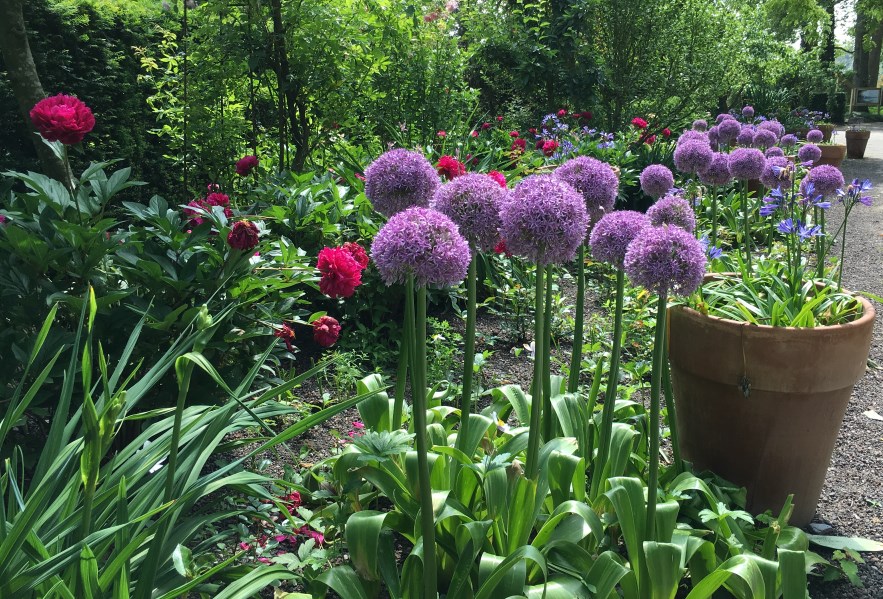
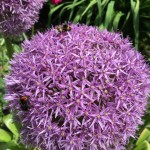
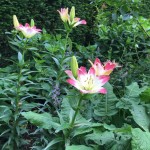
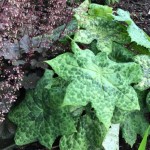
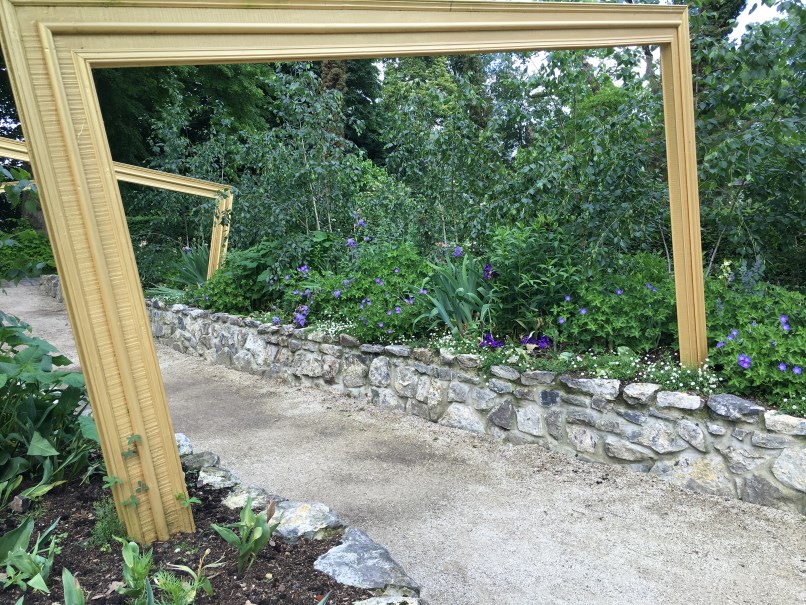
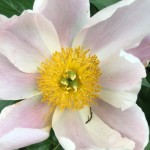
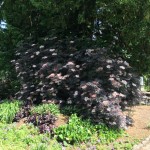
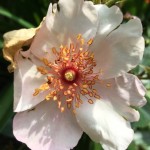
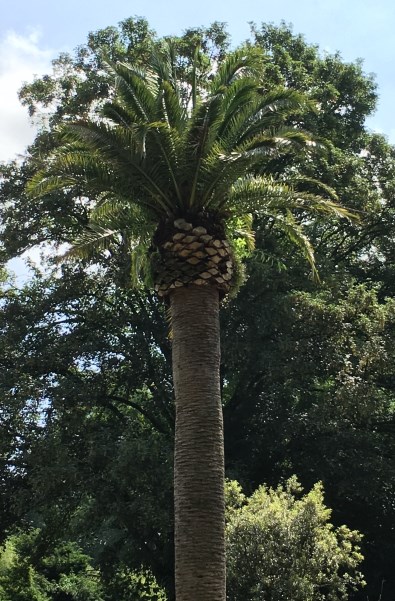
Reactie door poker — 29 november 2022 14:48 @ 14:48
Poker is often a sport that may be enjoyable and demanding, and it could be a terrific
way to rest and possess some pleasurable with good friends.
If you’re new to the game, here are a few ideas that will allow you to start out.
1st, it is important to be aware of the rules of the game.
After getting a standard comprehension, you can begin learning the
basic poker strategies. These procedures can assist you make much better choices when playing the game,
and they will also assist you earn a lot more hands.
Whenever you very first start off taking part in Poker, it could be valuable to
Participate in with a small amount of money.
This fashion, you will get a really feel for the game and discover
the different tactics. After you have a greater understanding of the sport, you are
able to experiment with bigger sums of cash.
Poker is an enjoyable and complicated match which can be
liked by everyone. When you are new to the sport, here
are some strategies that will allow you to get going.
Pay attention to The foundations, learn the basic procedures, and
have entertaining!